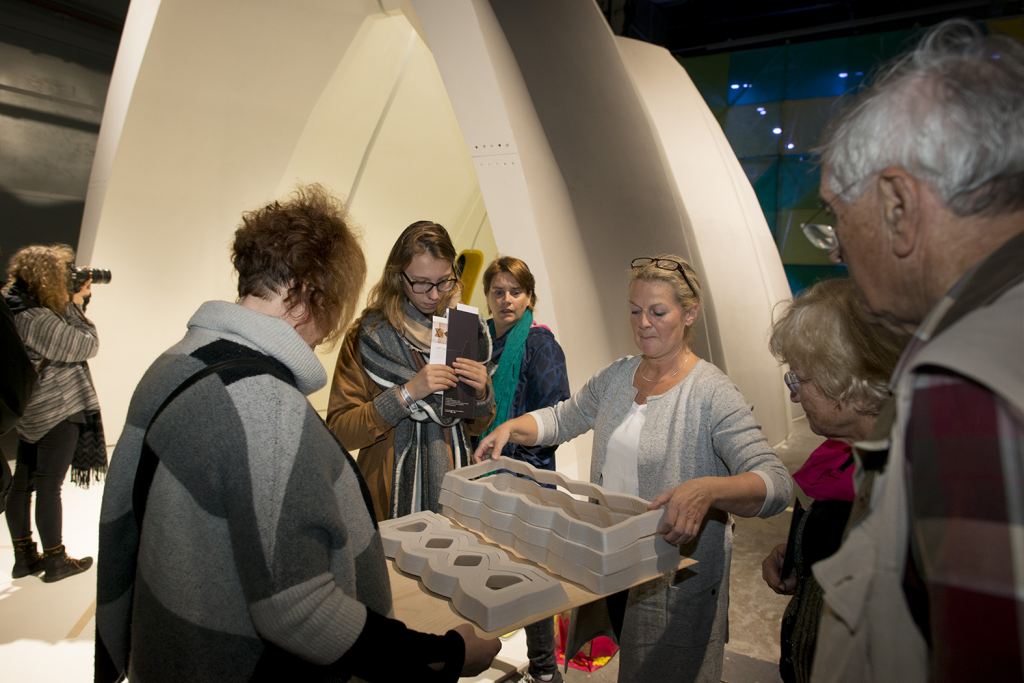
The COA (Central Agency for the Reception of Asylum Seekers) has enlisted the help of designers to house refugees by launching a competition. They received 366 entries for ‘A Home Away From Home’, from which 6 winners were selected. The winning prototypes will be showcased at DDW.
One of the winning concepts was sent in by René van Zuuk Architekten. For their work ‘RE-Settle’, Van Zuuk and his team cut polystyrene into blocks, which would ultimately ensure a lightweight yet insulated house.
3D cutting
The blocks are created using a machine that cuts through two sides of the foam. The two ‘arms’ of the cutting machine move separately from one another, which allows arches and curves to be incorporated into the design.
A former TU/e professor, Van Zuuk was inspired to use this cutting technique by 3D printing – a process with which he had already experimented and through which buildings are now already being made. “The downside of the process is that is takes much too long. It would have been years before we were fast enough and in a position to print on a large scale. But we were able to cut our material in two days,” says Van Zuuk.
“We achieved the same result we would have done with 3D printing, but just more quickly and cleanly. We left behind almost no residue or waste. It’s different with printing; generally only about 10 to 15 percent of the material is used and the rest is waste.”
Van Zuuk is trying to overcome this by cutting out the blocks like Russian nesting dolls. Once cut, the outermost part of the block is removed. Increasingly smaller blocks are then ‘peeled off’ and placed on top of the largest block, creating a round, igloo-shaped structure of polystyrene.
Reception in the region
“The material is light and so it’s easy to carry. Most importantly, it provides excellent insulation. This is an advantage over a 3D-printed concrete building, for example. That requires all kinds of additional materials to ensure that it’s a good building. We only need another single thin layer if we use polystyrene, so the building can be erected on the spot. ”
And this is the key. Van Zuuk’s design can be installed in the Netherlands as well as in the afflicted countries themselves, addressing the political desire to offer ‘reception in the region’.
“The compartments could also be shipped to Sudan, for instance, and put together there. We can secure the houses so that they’re windproof. Occupants would still be able to make on the spot adjustments to the material, so to speak. They could saw out an extra window themselves.”
For now there’s still only one prototype. “But it would be great if the COA would eventually have 200 models in storage for when we’re faced with another crisis.”
Refugees
Van Zuuk explains that the refugee crisis didn’t automatically lead to the further development of 3D-cut polystyrene structures.
“We had the technology, but the COA gave us a goal to work towards and that’s what accelerated our process. I’m not under the illusion that our architecture will change the world, but in this way we can do something for the refugees, something for ourselves, and keep improving the technology. One plus one equals three.”
Visitors can see the work of Van Zuuk and his architectural firm at the Klokgebouw alongside ComfortCity. Three other winners, ‘Nieuwe buren, nieuwe erven, nieuwe oogsten’ (New neighbours, new properties, new harvests), ‘SolarCabins’ and ‘Evolutionary Wooden Houses’, will exhibit their work at the Stadhuisplein.


